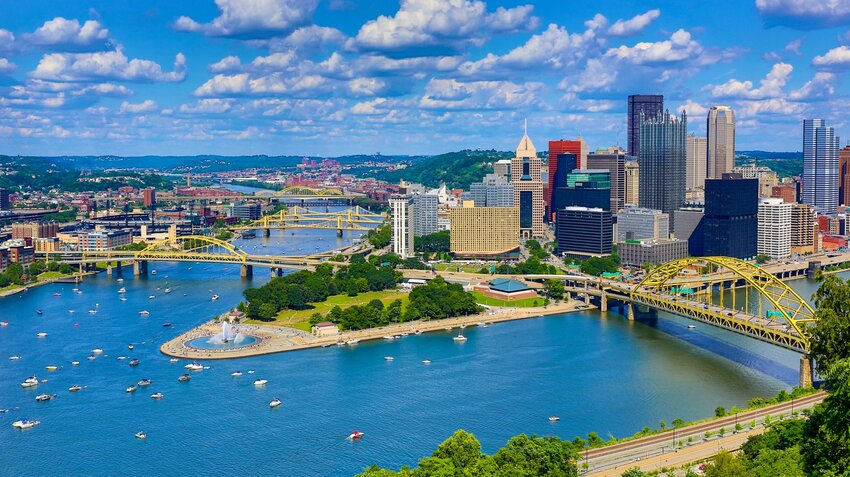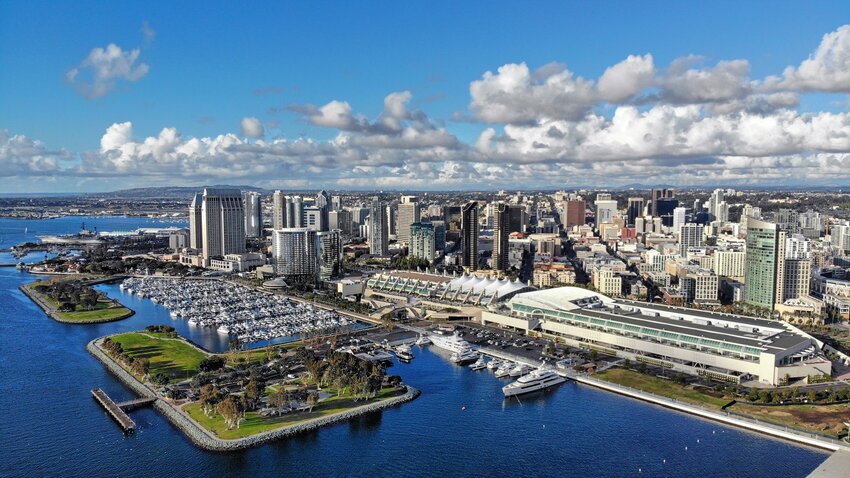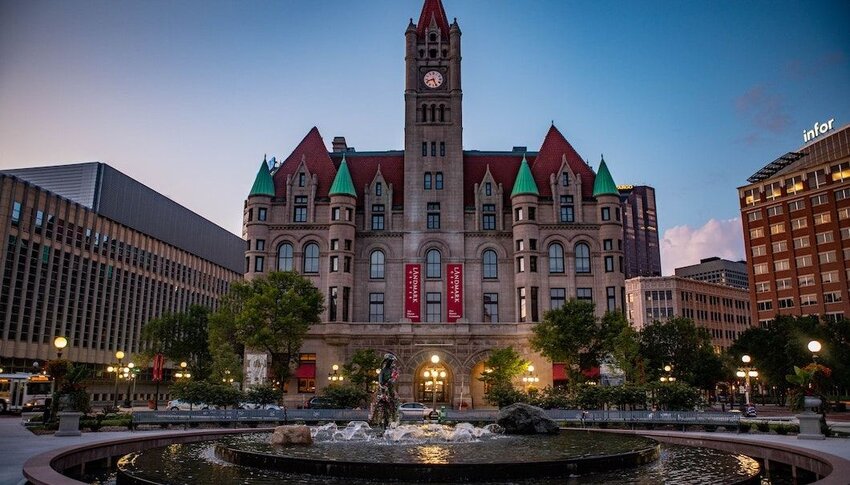There’s no one-size-fits-all qualification for a green city. Cities are unique and the projects and movements that make them more sustainable, future-facing spaces are just as particular. But no matter their differences, all cities share similar problems in a world where weather is less predictable and more extreme, infrastructure is threatened, and waste management systems are revealing themselves to be inefficient.
Generally, a sustainable city is working to combat outdated, wasteful, and harmful structures with the creation of enduring economic, political, cultural, and ecological systems. These movements are great for the world, residents, and for visitors — who doesn’t love a city that’s worked to be as inviting and responsible as possible? In no particular order, these 25 U.S. cities are leading the way in sustainability.
Austin, Texas

With swimming holes mere steps from the bustling downtown, paddleboarding and boat rentals on Lady Bird Lake or Lake Travis, and miles of biking along the Butler Trail, Austin is a playground for sustainability lovers. The city has been recognized time and time again for its projects, particularly its heavily incentivized green infrastructure, which includes the Austin Energy Community Solar initiative and LEED-certified buildings. Proactively adjusting floodplains with the anticipation of more rainfall, ensuring water availability, and protecting and building Austin’s urban forests are just some of the programs and initiatives ensuring Austin’s Climate Equity Plan will get the city to net-zero emissions by 2040.
Babcock Ranch, Florida

Built in the Babcock Ranch Reserve just outside of Fort Myers, nature and conservation play an enormous role in the ethos of this almost entirely solar-powered town. Homes, public buildings, and green spaces are powered by an 870-acre solar farm. Solar trees provide shade and on-site charging for loungers in public parks, native plants keep invasive, water-draining species out of the land, and local animals and fish are protected in the area’s lakes and rivers. If you’re looking for a city far ahead in the quest for ultimate sustainability, this meticulously planned one is unlike any you’ve seen before.
Bar Harbor, Maine

The small island on Maine’s coast is an environmentalist's daydream. While not technically a city, 6 million visitors descend every tourist season, and this small town is working as hard as any metropolis to protect its limited resources. The waters of coastal Maine are affected by the changing temperatures, pulling Maine’s prize products — fish, lobsters, and oysters — into different patterns and waters. The island’s climate action plan promotes renewable energy resources available to businesses, sustainable transportation in the form of shuttles that take visitors around the park itself, and prioritizes public education and engagement. A Climate To Thrive holds similar goals in the area, including community efforts to reduce waste, create energy-efficient systems, and ensure that visitors are investing their money where it’ll do the most good.
Boston, Massachusetts

As one of the U.S.’s most walkable cities, Boston is quite adept at keeping with those New England values and appreciating the land it stands on. From the Boston Common to whale tours, nature isn’t far from many Bostonian’s doorsteps. It’s one of the most energy efficient cities in the country, and it isn’t stopping there. In order to achieve net zero emissions by 2050, Boston’s Climate Action Plan lays out zero-waste toolkits and resources for businesses and residents, ordinances for land regulation to preserve natural areas, and transition plans to a carbon-free construction system. Many Boston energy consumers have the ability to choose what source their energy is coming from, and corporations are working to make it a cost-effective choice for residents.
Burlington, Vermont

The largest city in Vermont has been actively working to reduce emissions and waste for years. Burlington was one of the first cities in the country to source 100% of its electricity from renewable sources and is now working to do the same in heating and ground transportation. You won’t have to go far to find a farmers market and an environmentally minded person in Burlington, especially considering the state is filled with those who live off the land itself or use it as their main source of entertainment. A high-quality transportation system for residents is in the works, as are planning and development policies to support even more local food production. Once you’re done hiking and biking through Vermont, walk through Church Street Marketplace or down to the waterfront to see Vermont’s green living in action.
Charlotte, North Carolina

Charlotte’s City Council aims to be “a global leader in environmental sustainability.” Their Strategic Energy Action Plan details just how that will happen, with a goal of reducing emissions to below two tons per person annually. To facilitate greener transportation, Charlotte’s government is working to connect the city through walkable and bikeable paths, as well as increasing the amount of EV charging facilities. So, the next time you’re in Charlotte, try one of the city’s B-cycle bike shares while commuting between Freedom Park and the Little Sugar Creek Greenway.
Denver, Colorado

Full of savvy outdoor enthusiasts, it’s no wonder that this mountainous city was ranked one of the greenest in the world in 2021 by National Geographic. There are programs to eliminate waste, including a BYOBag tax and systems to make recycling, composting, and trash collecting easy and beneficial. Rebates for e-bikes and electric vehicles, car shares, and rideshare program pilots make it difficult not to be a part of the green movement in this city. Business partnerships help promote sustainability in cannabis production and green career pathways for people from under-resourced communities.
Des Moines, Iowa

In between trips to the Botanical Garden and the Pappajohn Sculpture Park, visitors in Des Moines will likely find themselves appreciating the natural beauty curated in this city, and may even wonder what steps are being taken to create more of it. Des Moines city government considered this question too and made it one of the primary goals of their Comprehensive Plan for the city. More walkable, bikeable neighborhoods are in the works, as are trail systems for commuters, walkers, and enjoyers of nature. All this is in conjunction with the city’s partnerships with utility companies to reduce and better manage energy and keep the area safe and healthy for years to come.
Fremont, California

The Bay Area contains miles of gently rolling hills in areas like the Mission Peak Regional Preserve and lakeside backdrops around Lake Elizabeth, spaces that capture a quiet peace California excels at protecting. And in Silicon Valley, technological advancements in sustainability are just another form of innovation. Filtered stormwater planters for resourceful vegetation watering, streets that accommodate all sorts of transportation, LED fixtures, solar-powered EV charging stations, and microgrid energy systems are just a few ways to see Fremont’s Climate Action Plan in motion.
Honolulu, Hawaii

Lush, green, gorgeous, and heavily affected by the extreme weather conditions created by climate change, Honolulu is another city that’s taken sustainability in stride. There are nine main strategies in Honolulu’s Climate Action Plan to achieve carbon neutrality by 2045, including green modes of transportation, energy efficiency, and promoting methods for waste prevention. Hawaii emphasizes community voices and participation in island-wide surveys and community meetings to make climate action not only possible but collectively fun. While hiking, surfing, and exploring the nature of Hawaii, visitors are encouraged to respect the land and people by treading as lightly as possible.
Indianapolis, Indiana

Between learning to make your own beer and stargazing at the largest public observatory in the world, Indianapolis will remind you it’s a cultural force. The city’s doing the same with sustainability. Committed to carbon neutrality by 2050, the Thrive Indianapolis plan outlines the shocks and stressors that have increased the vulnerability of its communities, many of which were brought on by extreme weather conditions. The plan outlines ways residents can be a part of the solution — who doesn’t want a rain garden? — as well as the programs and benchmarks for green zoning, sustainability-related business partnerships, green job incubators, and smoothing the path for solar energy installations.
Los Angeles, California

By 2045, Los Angeles plans to have 100% of its energy come from renewable sources. Perhaps even more impressive is the water recycling system they’ve planned for 2035 to combat the growing number of heat waves. A net-zero city is coming in the next few decades, as the pLAn sets out aggressive climate goals in partnership with solar and electric vehicle companies. Mayor Garcetti has been ambitious, and it’s a good look for the city; there are plans for energy storage, water waste management, and specialized offices focusing on underserved and underrepresented communities. When you’re at the top of Griffith Park appreciating the enormity of this city, the efforts L.A. is making will make the view all the more impressive.
Madison, Wisconsin

The climate-forward agenda that Madison strives toward is an aggressive and impressive one. Aiming for net-zero emissions by 2030, the goals include making all city-owned property entirely run by renewable energy, and reducing greenhouse gas emissions as quickly and as efficiently as possible. There’re plans to create commercial centers accessible by sustainable transportation, upgrade infrastructure to be more green, and support businesses in embracing climate-safe and resource-saving initiatives. So whether you’re enjoying the waters of Lake Mendota or exploring the Olbrich Botanical Gardens, Madison is supporting your utilization of these natural spaces.
New York City, New York

Being green is one of those things that will never not be vogue, and New York has always been a leader in style. With miles of bike lanes, an extensive subway and transit system, and more and more green spaces written into the very zoning laws themselves, it’s hard to visit New York and not get an intimate look at sustainability in the city. OneNYC, the city’s Green New Deal, sets out to remove the city’s dependence on fossil fuels and cars by 2050, and NGOs across the city are rallying community members to participate in local farmers markets, community gardens, and environmental stewardship programs.
Pittsburgh, Pennsylvania

From farmers markets to the Three Rivers Heritage Trail to the 165 parks throughout the city, the people of Pittsburgh enjoy their natural spaces as much as they do their sustainability. Environmental stewardship and green living have been able to thrive with the city’s research universities, non-profit environmental groups, and government bodies. Yearly reports on their climate action plan reveal their progress towards 100% renewable energy in city facilities, reducing water and energy use by 50%, divesting from fossil fuels, and creating a zero-waste management system.
Portland, Oregon

There are quite a few ways to get in touch with Portland’s riveting outdoor scene, including the beautiful and unavoidable Hoyt Arboretum and Forest Park. This nature-forward city excels in preserving picturesque natural spaces, and in ensuring that the city works to protect them. Portland seems to exude green living from every tree, with the country’s highest number of vegan and vegetarian restaurants and almost half of its power coming from renewable sources. Even with a highly efficient waste management system and an enormous amount of green space, Portland isn’t done. Their Climate Emergency Workplan and carbon emissions target (net zero by 2050) set up aggressive carbon reduction plans to keep the city green, healthy, and long-lasting.
Rochester, New York

Despite being on the way back from Niagara Falls, Rochester is a city that often goes unnoticed in the shadow of the state’s larger metropolis. But given its picturesque placement beside Lake Ontario and its green policies, it just may be that Rochester is moving into the spotlight. Earning an ‘A’ in CDP’s ranking (a gold standard of carbon disclosure rating) puts Rochester in the same category as Paris, Cape Town, and Hong Kong. For years the city has been creating updated climate plans addressing the current state of the world — no outdated systems here. The most recent Climate Change Resilience plan outlines informative community outreach, bicycle route strategies, green roof systems, and transforming a landfill into a solar field, among many other critical plan points.
Sacramento, California

When you’re in town for the Farm-To-Fork Festival in Sacramento you may look around and wonder if this sustainable event is a one-off or more representative of a larger, citywide movement. Look no further than the steps the city has taken to make the area more pedestrian-friendly, including closed streets, energy audits, zero-emission zones, and electric vehicle initiatives. There are waste and recycling divisions focused on better management (we will forever rave about backyard composting classes), and important environmental justice elements that ensure public facilities, sanitary housing, and healthy food access for all.
Salt Lake City, Utah

No matter the season, Utah’s hiking, biking, rock climbing, and skiing tempt visitors and residents at every turn. Perhaps even more appealing is the recycling, energy, and climate actions the city and NGOs have taken to ensure the natural beauty of Salt Lake City remains intact. Community food pantries and links to local farms help improve community-wide access to healthy, affordable food options. Composting and recycling bins reduce waste that overwhelms landfills, and community education programs help make waste management easy for city dwellers. At this rate, a climate-positive city is well within reach for Salt Lake.
San Bernardino, California

San Bernardino has gotten some major applause in recent years for the bioenergy project that’s keeping up to 300,000 tons of organic materials out of landfills. It turns waste into energy while removing greenhouse gasses from the atmosphere. For context, that’s the equivalent of keeping nearly 50,000 passenger cars off the road every year. Like many cities in warm, arid climates, growing water needs have pushed the county to set restrictions for residents and visitors and to put emphasis on long-term conservation. Get closer to the natural beauty the area is working to preserve at Glen Helen Regional Park or on the Rim of the World Byway.
San Diego, California

Like much of the world, California towns and cities are feeling the effects of climate change in real-time, with rising temperatures and water shortages pushing them to develop aggressive Climate Action Plans. San Diego aims to be net zero in greenhouse gasses by 2035, developing renewable energy services, and working to understand — and make changes based on — the current impacts of climate change. So while you’re hiking coastal bluffs or strolling through the annual ArtWalk, keep an eye out for the solar panels mandated on new buildings, more EVs and EV charging stations, and scooters, bikes, and pedestrian spaces for easy navigation of the city.
San Francisco, California

Lauded as one of the greenest cities in America, San Francisco is a global powerhouse of sustainable efforts. Widespread recycling and composting systems keep waste out of landfills and sort it into the correct spaces. These systems divert more than 1.5 million tons of material from landfills every year — that’s almost double the weight of the Golden Gate Bridge. San Fran’s been working to save money and water by ensuring buildings have efficient plumbing systems, mandates for new construction, and onsite water reclamation policies. There are efforts to make the city more bikeable and walkable, create more urban forests, and reduce the waste produced by taxis and public transit.
Seattle, Washington

The Emerald City is an apt nickname for a town that’s as embedded in nature as Seattle. The city’s government and environmental groups are working towards electrical and energy-efficient buildings and resources to help new and existing businesses save money as they protect the environment. There’s even an application process to get free trees for your neighborhood, and programs to learn how to care for them. From solar power to home energy protections, Seattle is helping reduce energy waste and emboldening the community to help.
St. Paul, Minnesota

There are small wonders hidden around this city when they aren’t covered in snow. Poems written by residents are pressed into the sidewalks and their art covers murals around the city. The efforts to create a strong, environmentally conscious community are just as visible. In partnership with renewable energy institutes, the city government of St. Paul created a climate plan aiming to achieve carbon neutrality in city operations by 2030 and citywide by 2050. Their plan concerns waste and water treatment and management, cutting transportation emissions, and rallying the community to work together towards adapting to climate change.
Washington D.C.

For all the political noise in the district, the residents of this monumental city are a climate-forward bunch. The farmers markets send local produce right into the hands of shoppers, and with so many around the city, supporting local food is easy and enjoyable. Plus, every market comes equipped with a composting system for all residents to use. The city government is investing in renewable energy and energy preservation measures in order to cut emissions, with efficient building plans and transforming transportation through electrification. The energy efficiency competition between all D.C. public schools is one example of the community supporting — and having fun with — sustainability goals.





